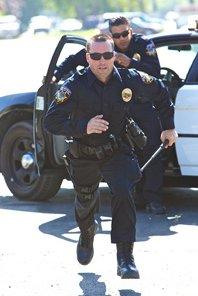 Over the years, the standard Law Enforcement Uniform industry has changed dramatically to accommodate modern advances in uniform technology and new weaponry. With the constantly changing uses of different fabrics, hues, and designs, it is also important to not allow these new elements to negatively change their effectiveness or cause distraction to an officer while performing their duties. Administrators and officers must evaluate whether spending the extra money on the most superior, feature packed uniforms is really valuable to the officer in the field. Most people would assume that changes have been made to accommodate newer weaponry and advancements in tools, but the basics of the uniform itself have changed dramatically as well and impact the overall image he/she projects.
Over the years, the standard Law Enforcement Uniform industry has changed dramatically to accommodate modern advances in uniform technology and new weaponry. With the constantly changing uses of different fabrics, hues, and designs, it is also important to not allow these new elements to negatively change their effectiveness or cause distraction to an officer while performing their duties. Administrators and officers must evaluate whether spending the extra money on the most superior, feature packed uniforms is really valuable to the officer in the field. Most people would assume that changes have been made to accommodate newer weaponry and advancements in tools, but the basics of the uniform itself have changed dramatically as well and impact the overall image he/she projects.
Uncomfortable, cumbersome, and irritating uniforms are a thing of the past because of innovations in the police uniform industry. This is not only beneficial to the overall comfort of the officer, but in proper context, the crisp, comfortable, and clean look of modern police uniforms can help a law enforcement officer actually execute his/her duties more effectively. Function and reliability must take precedent over style.
Using the recent advances in the most optimal way, law enforcement uniforms may now incorporate improvements in fabric technology to manage moisture, resist Ultra-violet rays, fight and resist bacteria, and are more durable and resistant to stains.
Newer law enforcement uniforms take the work out of looking professional on a daily basis. A dirty or wrinkled uniform or a badly worn duty belt may convey a message to a suspect that the officer has a complacent attitude about his or her job. With the help of wrinkle proof uniforms, stain resistant fabrics, the fade resistant qualities, law enforcement officers need to worry less about projecting complacency, possibly averting an invitation to violence.
In the field, a uniform plays a major role in the civilian perception of an authority figure. In addition to the color, the condition of a police officer’s uniform and equipment can also have an impact on the officer’s safety. Interviews with prison inmates who have murdered police officers indicate that the killers often visually “sized-up” the officer before deciding to use violence. If the officer looked or acted “unprofessional” in the assailant’s eyes, then the assailant felt that he was capable of successfully resisting the officer.
There are questions about the importance of equipping police uniforms with the latest and greatest advances in technology and if the new and “improved” fabrics really enhance performance realistically in an economy that demands conservative spending. It may seem to some that spending the extra money for enhanced fabrics and designs on officers on active duty is unnecessary and that the money allocated could be spent in different ways but, in the real world of an officer of the law, projecting an image of professionalism and authority while avoiding confrontation with civilians is the most optimal outcome with any situation, and therefore, worth every penny.


